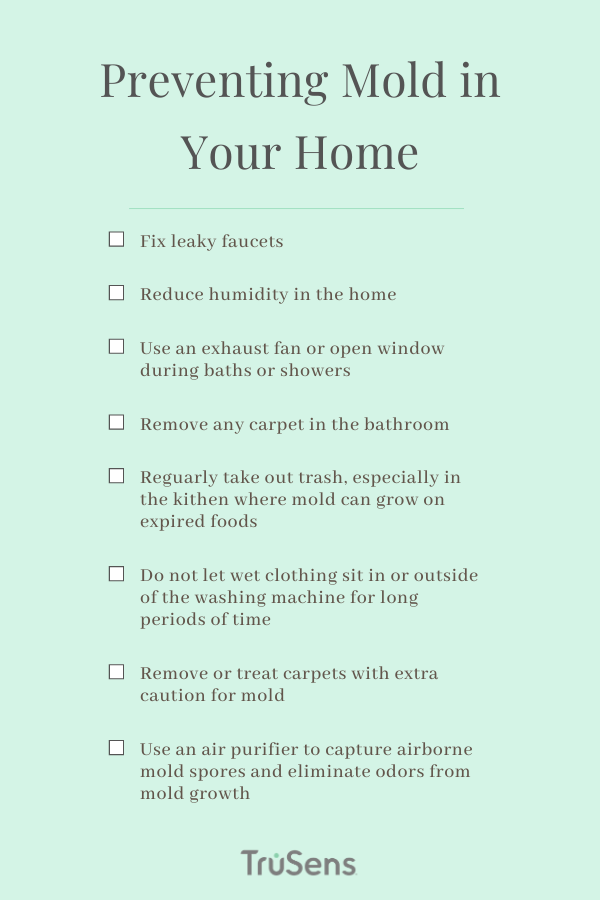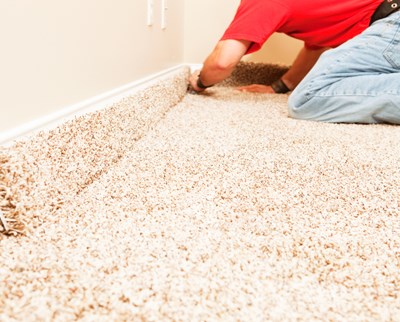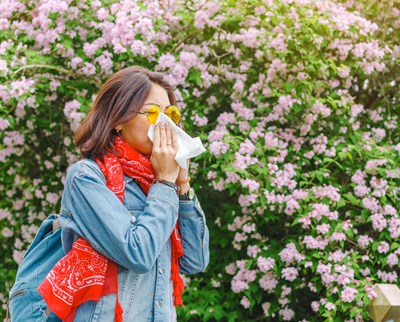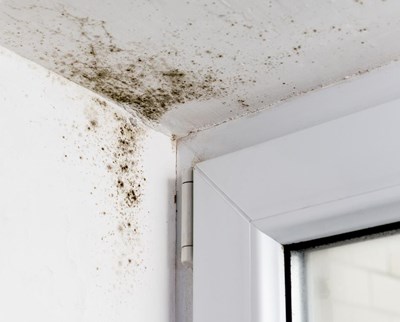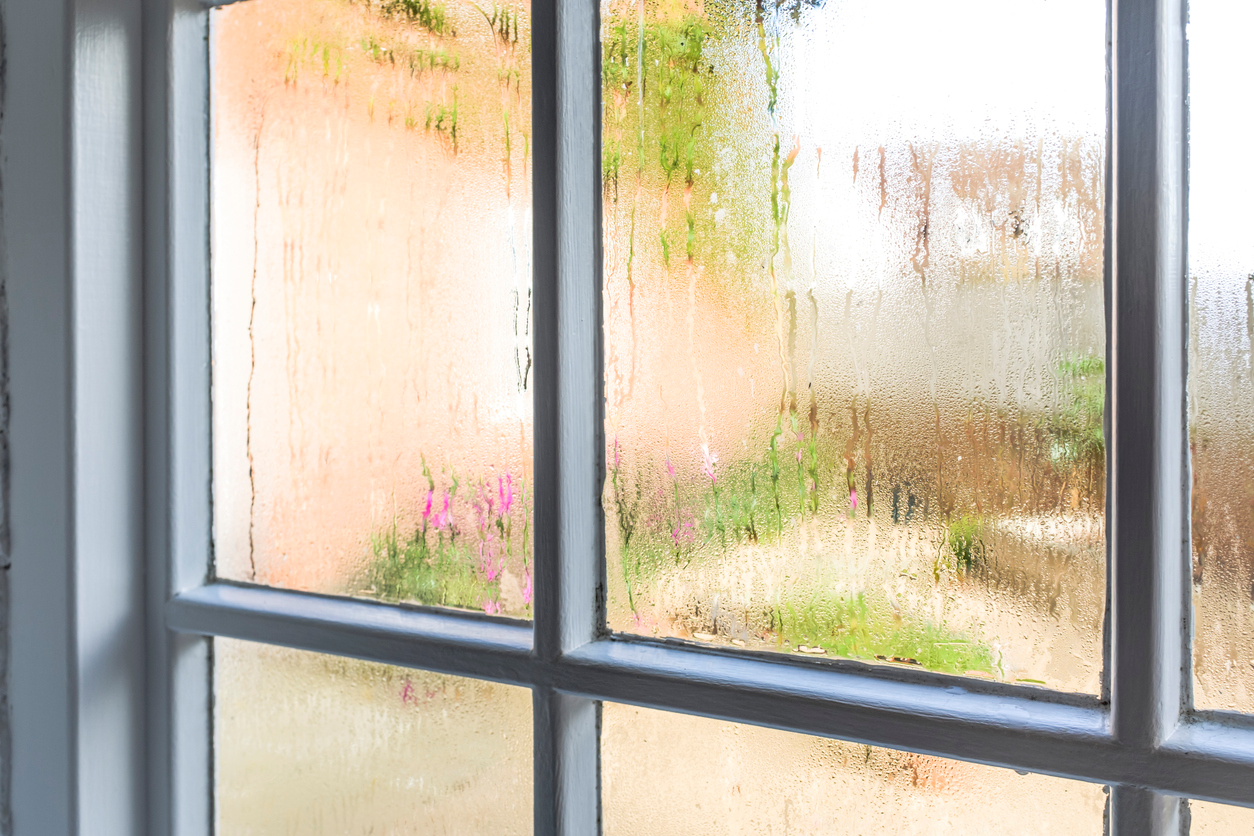
Mold is one of the biggest culprits of allergy symptoms, and as it is able to grow indoors as well as outdoors, it is present year-round. Not only is mold unpleasing to the eye when growing, but more importantly its spores can cause those allergic to it to experience allergy symptoms.
Sources of Mold Allergens
Mold is a fungus with varied sources, like plants. The “seeds”, known as spores, travel through the air. When spores are met with moisture inside or outside, mold begins to grow. Outdoors, mold tends to grow in moist locations like rotting logs, leaf piles, or in damp forests. Indoors, mold commonly grows in bathrooms, basements, or under sinks.
What is a Mold Allergy?
When people who have mold allergies inhale the airborne mold spores, they may experience allergy symptoms. Allergy symptoms from mold are similar to symptoms from other allergens, including sneezing, itching, runny nose, and congestion.
Outdoor conditions often cause allergy season to be experienced from summer through early fall, however, certain locations and indoor levels of mold may lead to year-round allergy symptoms.
What are the Symptoms of a Mold Allergy?
According to the Environmental Protection Agency (EPA), “Allergic reactions to mold are common and can be immediate or delayed. Repeated or single exposure to mold, mold spores, or mold fragments may cause a non-sensitive individual to become sensitive to mold, and repeated exposure has the potential to increase sensitivities.” Symptoms that may be experienced by those with allergies or sensitivities to mold include headache, sneezing, runny nose, red eyes, or a skin rash (dermatitis).
Those who are both allergic to mold and have asthma can experience additional symptoms including irritation of the eyes, skin, nose, throat, and lungs.
How Can I Reduce Exposure to Mold?
Allergy symptoms vary based on exposure levels to mold and the sensitivity of the individual. The ability to reduce the exposure will depend on the source of the mold.
Reducing Exposure to Mold Outdoors
- Limit time outdoors when mold counts are high. Mold counts are a good indicator for how much exposure you will experience. Avoid spending time outdoors when these counts are on the higher side.
- Know what to avoid. Piles of damp leaves or compost have high potential for mold. Avoid these potential allergy symptom triggers while outside.
- Wear protective gear like gloves or a mask when doing work outdoors. If you are participating in activities like yard work, use these tools to reduce exposure. It is also a good idea to shower once you have completed your work and returned indoors.
How to Prevent Mold in Your Home
When mold spores in the air are met with adequate moisture, mold growth begins. The key to preventing mold growth indoors is to reduce mold spores in the air and to create an environment that is not supportive of mold growth.
Here are some things to do to prevent mold:
- Fix leaky faucets and pipes. These leaks may create environments for mold growth to begin and thrive. Fixing these issues will help to prevent airborne spores from becoming mold growth.
- Reduce humidity in the home, and if you use a humidifier, regularly clean it to prevent mold growth. Humid environments encourage mold growth, therefore, keeping humidity levels lower will do the opposite.
- Use an exhaust fan or keep a window open during baths and showers.
- Remove any carpet in the bathroom.
- Regularly take out the trash, especially in the kitchen where mold can grow on expired foods.
- Do not let wet clothing sit in or outside of the washing machine for long periods of time.
- If you have a front-loading washing machine, regularly clean the rubber seal for the door.
- Keep your washing machine door open after uses to air out, and to prevent moisture from being locked inside and becoming a haven for mold.
- Remove or treat carpets with extra caution for mold. Carpets have a higher potential for mold than hard surfaces. Learn more about the relationship between carpets and mold here.
- Use an air purifier to help eliminate airborne mold spores. Air purifiers, like TruSens, help to reduce the mold spores from the air around. Keep reading to learn how TruSens takes action against mold.
How TruSens Helps Reduce Mold from Indoor Air
Mold spores may never be eliminated from indoor air, but TruSens Air Purifiers help to reduce them from the air and eliminate the lingering odors that mold growth may cause.
All TruSens Air Purifiers capture airborne pollutants as small as 0.3 microns, which includes mold spores of that size and larger. To put the 0.3 microns in perspective, mold spores range from 3-100 microns in size and a human hair averages 50-70 microns. Then the UV-C light inside the TruSens Air Purifier kills the mold allergens trapped in the filter. TruSens also offers Specialty Filters to customize your air purification experience.
The Specialty Allergy & Flu Filter captures 99% of airborne allergens, including airborne mold spores, while the Specialty Odor Filter defends against odors that can be caused by mold growth.
